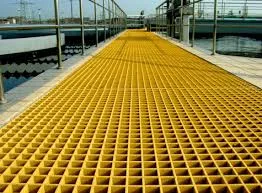
-
 Afrikaans
Afrikaans -
 Albanian
Albanian -
 Amharic
Amharic -
 Arabic
Arabic -
 Armenian
Armenian -
 Azerbaijani
Azerbaijani -
 Basque
Basque -
 Belarusian
Belarusian -
 Bengali
Bengali -
 Bosnian
Bosnian -
 Bulgarian
Bulgarian -
 Catalan
Catalan -
 Cebuano
Cebuano -
 China
China -
 China (Taiwan)
China (Taiwan) -
 Corsican
Corsican -
 Croatian
Croatian -
 Czech
Czech -
 Danish
Danish -
 Dutch
Dutch -
 English
English -
 Esperanto
Esperanto -
 Estonian
Estonian -
 Finnish
Finnish -
 French
French -
 Frisian
Frisian -
 Galician
Galician -
 Georgian
Georgian -
 German
German -
 Greek
Greek -
 Gujarati
Gujarati -
 Haitian Creole
Haitian Creole -
 hausa
hausa -
 hawaiian
hawaiian -
 Hebrew
Hebrew -
 Hindi
Hindi -
 Miao
Miao -
 Hungarian
Hungarian -
 Icelandic
Icelandic -
 igbo
igbo -
 Indonesian
Indonesian -
 irish
irish -
 Italian
Italian -
 Japanese
Japanese -
 Javanese
Javanese -
 Kannada
Kannada -
 kazakh
kazakh -
 Khmer
Khmer -
 Rwandese
Rwandese -
 Korean
Korean -
 Kurdish
Kurdish -
 Kyrgyz
Kyrgyz -
 Lao
Lao -
 Latin
Latin -
 Latvian
Latvian -
 Lithuanian
Lithuanian -
 Luxembourgish
Luxembourgish -
 Macedonian
Macedonian -
 Malgashi
Malgashi -
 Malay
Malay -
 Malayalam
Malayalam -
 Maltese
Maltese -
 Maori
Maori -
 Marathi
Marathi -
 Mongolian
Mongolian -
 Myanmar
Myanmar -
 Nepali
Nepali -
 Norwegian
Norwegian -
 Norwegian
Norwegian -
 Occitan
Occitan -
 Pashto
Pashto -
 Persian
Persian -
 Polish
Polish -
 Portuguese
Portuguese -
 Punjabi
Punjabi -
 Romanian
Romanian -
 Russian
Russian -
 Samoan
Samoan -
 Scottish Gaelic
Scottish Gaelic -
 Serbian
Serbian -
 Sesotho
Sesotho -
 Shona
Shona -
 Sindhi
Sindhi -
 Sinhala
Sinhala -
 Slovak
Slovak -
 Slovenian
Slovenian -
 Somali
Somali -
 Spanish
Spanish -
 Sundanese
Sundanese -
 Swahili
Swahili -
 Swedish
Swedish -
 Tagalog
Tagalog -
 Tajik
Tajik -
 Tamil
Tamil -
 Tatar
Tatar -
 Telugu
Telugu -
 Thai
Thai -
 Turkish
Turkish -
 Turkmen
Turkmen -
 Ukrainian
Ukrainian -
 Urdu
Urdu -
 Uighur
Uighur -
 Uzbek
Uzbek -
 Vietnamese
Vietnamese -
 Welsh
Welsh -
 Bantu
Bantu -
 Yiddish
Yiddish -
 Yoruba
Yoruba -
 Zulu
Zulu
Exploring Sustainable Solutions in the Chemical Product Industry
Exploring GRP Chemical Products Innovations and Applications
Glass Reinforced Plastic (GRP) chemical products represent a significant advancement in materials science, combining the durability of glass fibers with the versatility of plastic. These products have gained immense popularity across various industries due to their unique properties, offering excellent strength-to-weight ratios, corrosion resistance, and design flexibility.
The Composition of GRP
GRP is formed by embedding glass fibers into a polymer matrix. This composite material is engineered to capitalize on the advantageous characteristics of both components. The glass fibers contribute tensile strength and stiffness, while the resin provides resilience and resistance to environmental factors. This combination results in a lightweight material that possesses the mechanical strength of metals without the associated weight.
Applications in Various Industries
GRP chemical products find applications in numerous sectors. In construction, GRP is utilized for manufacturing roofing materials, balustrades, and wall panels. Its resistance to moisture makes it ideal for structures that are exposed to harsh weather conditions. In the automotive industry, GRP components are employed for body panels and interiors, offering manufacturers the opportunity to reduce vehicle weight and improve fuel efficiency.
Furthermore, GRP is extensively used in the marine sector. Boat hulls, decks, and other critical components made from GRP resist corrosion from saltwater, thus ensuring longevity and safety. The chemical industry also benefits from GRP products—storage tanks, pipes, and fittings made from this material exhibit high resistance to aggressive chemicals, ensuring safe transportation and storage of hazardous substances.
grp chemical product

Environmental Implications
One of the driving forces behind the popularity of GRP chemical products is their relatively low environmental impact compared to traditional materials. The manufacturing of GRP can be more energy-efficient, and its lightweight nature can contribute to fuel savings in transportation applications. However, it is essential to note the challenges associated with disposal, as the durability of GRP also means that it can take a long time to degrade in landfills.
Innovations in GRP Technology
Recent advancements in GRP technology have focused on enhancing performance through the development of new resin systems and modification of the glass fibers. Innovations such as the integration of nanotechnology aim to improve the thermal and UV resistance of GRP, making it suitable for even more demanding applications. Additionally, the industry is exploring sustainable alternatives for resin that could reduce the environmental footprint of GRP products.
Conclusion
As industries continue to seek materials that offer both strength and sustainability, GRP chemical products are poised to play a pivotal role. Their ability to withstand harsh environments while providing flexibility and ease of manufacturing makes them an ideal choice for a variety of applications. With ongoing innovations aimed at enhancing their performance and sustainability, GRP products will likely continue to evolve and gain prominence in the materials science landscape, meeting the demands of a rapidly changing world.









